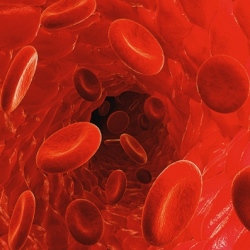
Super metformin: Metformin has been a primary drug for diabetes for more than 50 years. Metformin acts by boosting the activity of AMPK, a metabolic regulator that favors fat- and sugar-burning and prevents their accumulation. Because AMPK is relevant in all tissues,metformin is extremely important in reducing metabolic imbalances.
Strong evidence suggests that metformin, through its protective effects and AMPK-activating properties, can help prevent cancer, cardiovascular disease, obesity and its consequences, and even neurodegenerative disorders.
Studies show that metformin fights obesity and reduces body fat mass, even in non-diabetic patients.
Metformin (dimethylbiguanide) is now reputed to be the most widely prescribed agent in the treatment of diabetes. Its history can be traced back to the use of Galega officinalis Linn as a herbal medicine in medieval Europe.
Researchers are working on drugs that are more powerful versions of Metformin.
Rapalogs: Rapamycin seems to have antiaging benefits but it suppresses the immune system. Rapalogs are drugs that provide the benefits but not the bad side effects of rapamycin. They could be among the first real antiaging medicines.
NAD boosters: Nicotinamide adenine dinucleotide (NAD) is naturally present in every cell of our body and plays a role in a myriad of cellular processes, most notably the one controlling DNA repair. NAD keeps our bodies built-in DNA repair machinery working smoothly. However, our NAD levels decline by about 50 percent as we age, which in turn, weakens the body’s defenses against age-related diseases such as diabetes, heart disease, cancer, and Alzheimer’s.
Dr. Sinclair believes that a compound found in all living cells, nicotinamide adenine dinucleotide (NAD), could be used to mimic these effects of calorie restriction in humans without the starvation or decreased reproductive capacity.
Sinclair’s lab showed that feeding mice nicotinamide mononucleotide (NMN)—a related, precursor compound that the body converts into NAD—may slow aging in the animals, mimicking the effects of calorie restriction. “We get the same effects as exercise or dieting,” he says. “The mice are leaner, have more energy. They can run further on a treadmill.” That research continues, and is poised to be tested in humans: the first stage of the trials of NMN that he was preparing to begin in August at a Harvard-affiliated hospital will test for NAD increases in the blood; after that, he plans to study NMN’s efficacy in treating diseases. Sinclair has been taking the compound himself for about a year. He’s reticent about that, to avoid sounding like a “kook,” but claims his lipid profile has improved dramatically and he feels generally less fatigued—though he admits this is not scientific.
Mitochondrial activators: Mitochondria are intracellular organelles, known to be involved in various metabolisms and energy production. Particularly, adenosine triphosphate (ATP) important for the biological energy is a main resultant product of mitochondria. Low mitochondrial activity directly leads to the depletion of ATP, and depletion of ATP develops various diseases. For example, heart diseases, myasthenia, diabetes, liver diseases, mitochondrial diseases (mitochondrial dysfunction), brain diseases (e.g., neurodegenerative diseases such as Parkinson’s disease, Huntington’s disease, Alzheimer’s disease, amyotrophic lateral sclerosis and the like, and the like) can be caused, of which diabetes is particularly important.
Senolytics: Senolytics selectively induce death of senescent cells. Multiple possible senolytic agents are under investigation. There are at least 14 senolytics. Certain anti-cancer agents may in low doses decelerate aging and age-related diseases. Targeting cancer prevention pathways with anti-cancer agents may confer longevity effects by offering protection from metabolic pathologies during aging, independently of effects on cancer.
Researchers wrote that potential clinical trial scenarios include testing whether senolytic drugs could alleviate multiple chronic diseases in a single patient or whether such drugs could treat conditions that involve senescent cell accumulation in one location in the body, such as osteoarthritis.
They also suggest testing whether the drugs could treat diseases for which there are no medicines proven to slow the progression of that disease, such as idiopathic pulmonary fibrosis, a cell senescence-associated disease that affects the lungs.
Other potential clinical trial scenarios include testing whether the drugs could alleviate frailty in older adults or could treat conditions associated with chemotherapy or radiotherapy, since radiation can produce cellular senescence, Kirkland said.
One company, Unity Biotechnology, aims to be the first to demonstrate that removing senescent cells can cure human diseases.
